2 Outcome 1: Overhead Distribution Systems
Section Information
Outcome/Competency: You will be able to describe overhead distribution systems.
Timing: 6.5h
Rationale:
Why is it important for you to learn this skill?
Powerline technicians need to understand the basics of the overhead distribution systems they’ll be working with in order to understand how current flows and keep themselves safe, as well as to complete their jobs accurately.
Objectives:
To be competent in this area, the individual must be able to:
- Identify and describe common overhead powerline components and uses
- Identify and describe common operating voltages
Learning Goals
- Identify and describe common overhead powerline components and operating voltages.
Introduction:
In this section you will learn about insulators, types of conductors, line conductor properties, and transformers. You will be presented with content and have opportunities to practice throughout.
Topic: Insulators (1h)
Instructions:
- Cover the following content as a group (either reading out loud or independently) then give an opportunity to answer any questions.
- Have students do the review questions independently, then take up answers.
Line Insulators
Insulators are used to control the flow of electricity. Without them, there would be no way of preventing the electricity from flowing straight to ground.
Insulators are used for several reasons:
- Control electricity flow
- Conductor support
- Provides protection for employees and public
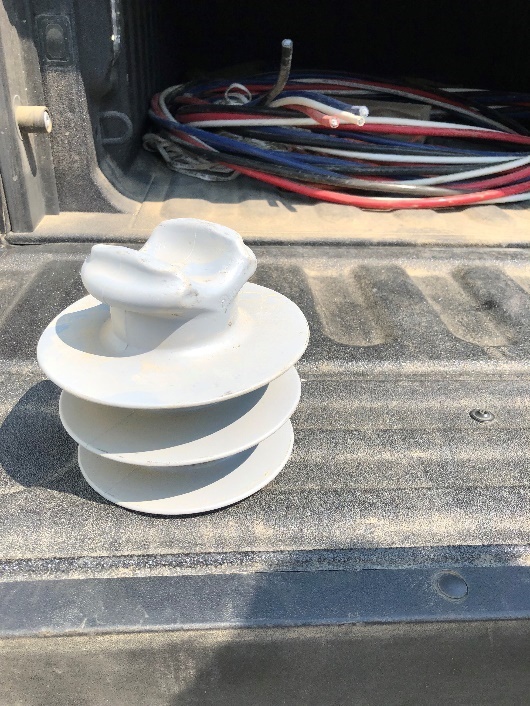 |
Pin Type InsulatorPin type insulators get their name because they are typically supported by a steel pin on a crossarm. We are most familiar with these insulators which are used primarily in distribution circuits and some lower transmission voltages. |
Post Type InsulatorPost type insulators are similar to the pin type but are much stronger so they can be used on long span lines. They can also be mounted horizontally on a pole (arm-less construction) when a narrow right of way is desired (cities). Post type insulators are also found in substations and GOPT switches and are often used to build high voltage lines in cities. |
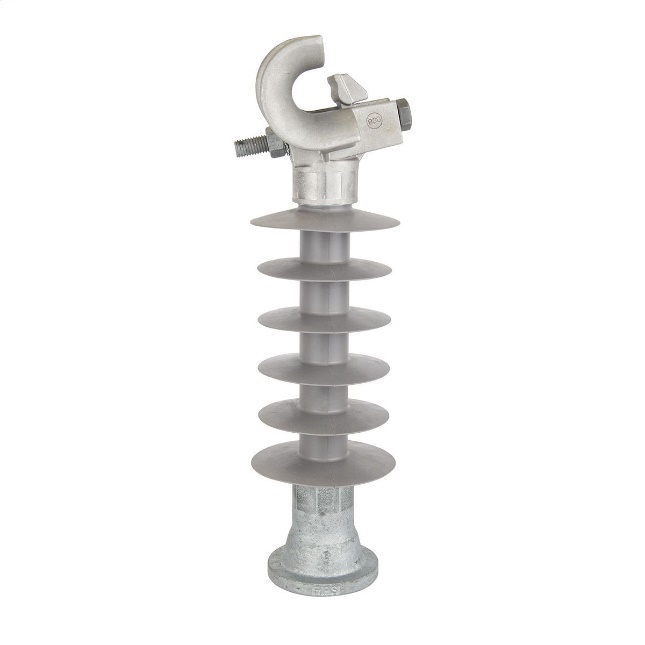 |
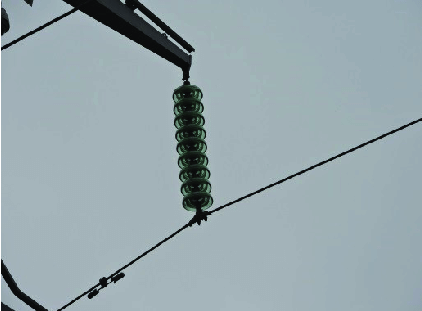 |
Suspension InsulatorSuspension insulators, as the name implies, are suspended from a crossarm with the conductor fastened underneath. These are used on high voltage lines and are actually individual “bells” or insulators connected together. They are designed so the number of insulators can be changed to suit the voltage (higher voltage = more insulators). They are used on long spans with transmission voltages. |
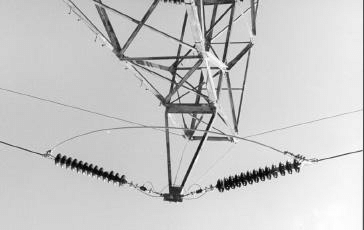 Strain InsulatorA different variation of suspension insulators are strain insulators. They are built the same but are stronger and used at points where a pull or strain exists. These are used at dead ends, running corners or on extra-long spans. Many of the strain insulators now used are made of epoxy or polymer materials. |
|
Guy Strain InsulatorGuy strain insulators were designed primarily for two reasons: To protect the public from current that could accidentally flow down a guy wire To prevent a lineman from working near a direct path to ground. Guy strains, which are intended to insulate in emergency situations only, are made of two different materials. Fibre rods are used on primary circuits (over 750 volts) while porcelain units are used on secondary circuits. |
 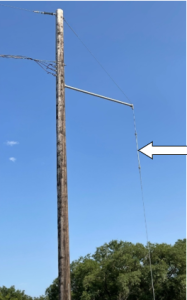 |
Secondary InsulatorSecondary insulators are used to support and insulate secondary voltages. These insulators include house knobs, spools and spreader brackets, and are used on low voltage applications only. |
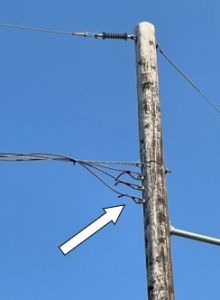 |
Flashover Rating
Insulators are rated at 1/8 their dry flashover voltage. If an insulator will flash over at 80kV (in dry, clean conditions), it will have a rating suitable for lines up to 10 kV.
Broken, chipped or dirty insulators should never be used in line construction. Not only will their rating be reduced, but radio noise and tracking may occur.
Review Questions: Insulators (30m)
- Insulators are rated at ( 1/4, 1/2, 1/8 ) their dry flashover voltage.
- An insulator rated at 25 kilovolts will arc over at:
- 15kV
- 25kV
- 200kV
- 120kV
- ( True / False ) Insulators can be made of porcelain glass or epoxy.
- ( True / False ) Suspension insulators should never have insulators added to increase the insulation rating.
- Match the statements on the right with the insulators on the left.
| a) Suspension | ____ Used where large tension exists. |
| b) Spreader brackets | ____ Used on long spans and high voltages |
| c) Strain | ____ Used on narrow right of ways |
| d) Guy strain | ____ Used to protect public and personnel |
| e) Post | ____ Used on secondary voltages |
- ( True / False ) Insulators with chips or cracks are safe to use if the damage is minor.
Answer Key
- 1/8, 2. 200kV, 3. T, 4. F, 5. c, a, e, d, b, 6.


